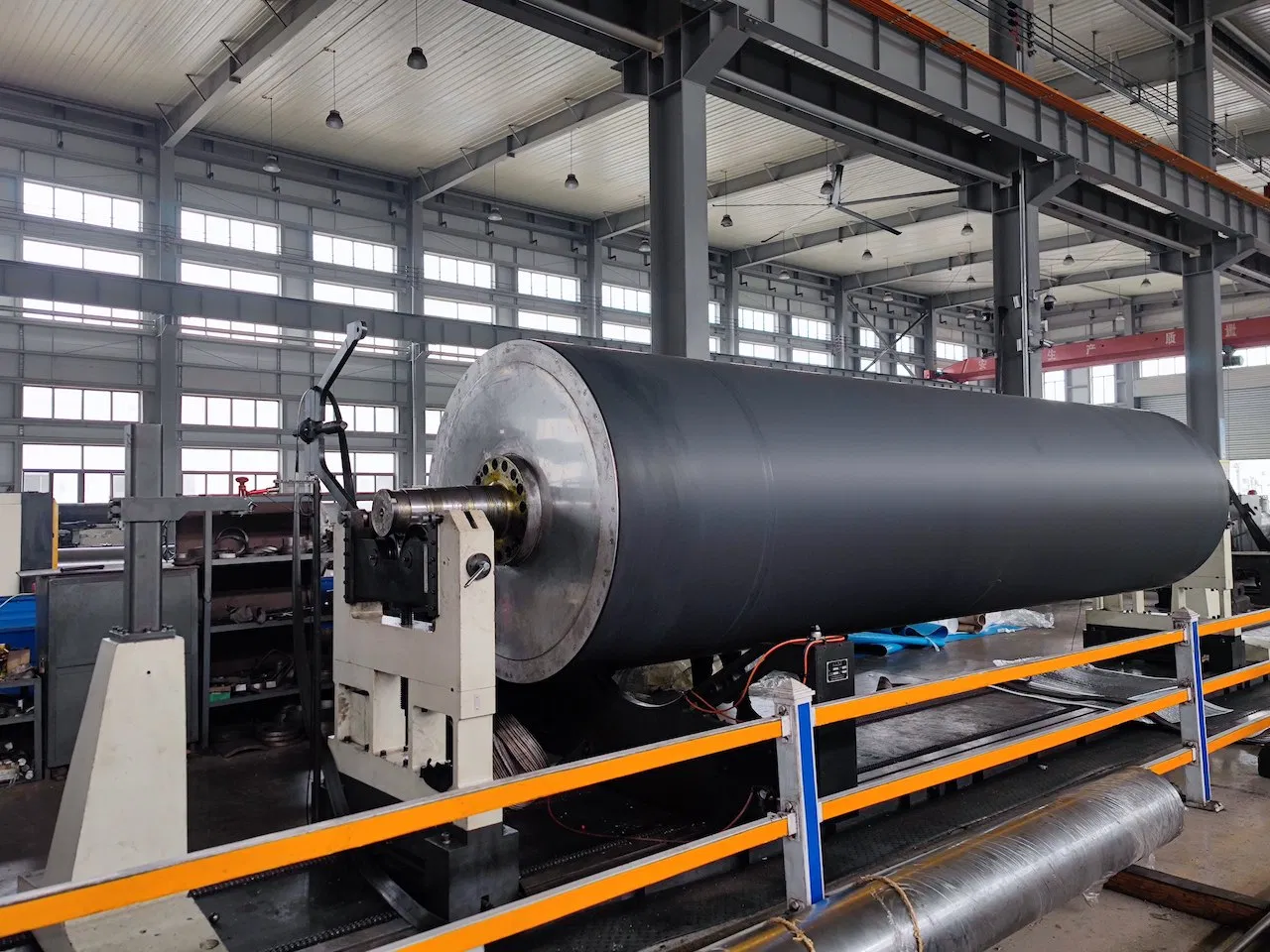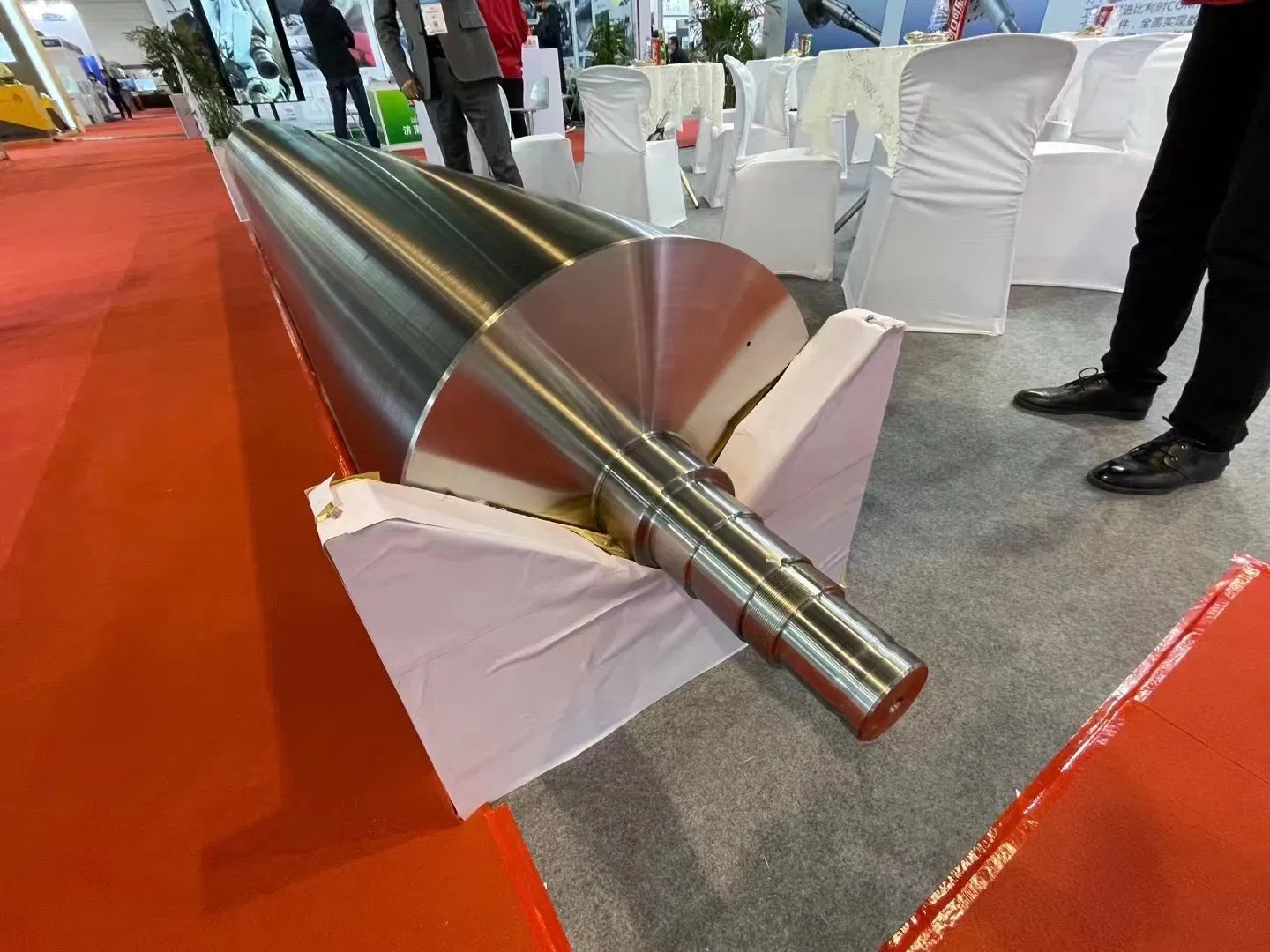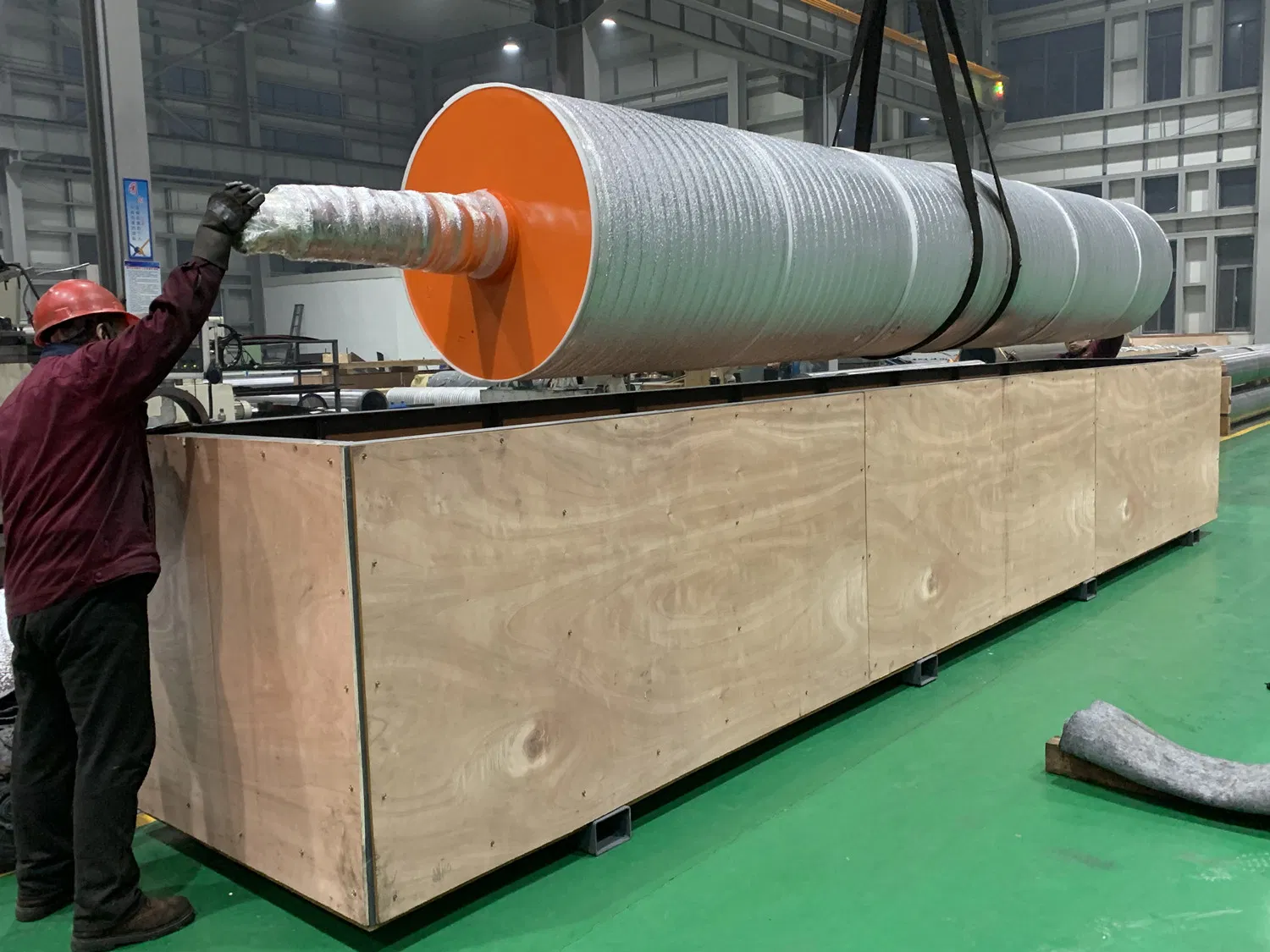The Vital Role of Paper Machine Rolls in Modern Papermaking
Have you ever wondered what makes paper smooth, strong, and consistent? A significant part of the answer lies in the design and performance of paper machine rolls. These aren't generic industrial components; they are highly specialized parts, each tailored for a unique stage of the papermaking process. * Forming Rolls: These are where the paper begins its journey. They help drain water from the fiber slurry, forming the initial wet web. The surface quality and precise geometry of these rolls are critical for uniform sheet formation. * Press Rolls: After forming, the wet web moves to the press section. Here, massive rolls apply immense pressure to squeeze out water, significantly increasing the paper's dry content. This stage is crucial for energy efficiency and paper strength. * Dryer Rolls: The paper then enters the dryer section, where steam-heated rolls evaporate the remaining moisture. These rolls must maintain uniform temperature across their surface to prevent uneven drying and warping of the paper. * Calender Rolls: Finally, calender rolls smooth and densify the paper, giving it the desired finish, gloss, and thickness. These rolls often operate at high temperatures and pressures, demanding exceptional material strength and surface hardness. * Reel Spools and Winder Rolls: These rolls are responsible for winding the finished paper into large, manageable jumbo rolls, ensuring consistent tension and preventing damage. Many experts agree that the performance of each roll directly influences the overall efficiency and product quality of a paper machine. Any deviation in concentricity, balance, or surface finish can lead to vibrations, uneven paper profiles, and costly downtime. This is why a top-tier paper machine roll manufacturer focuses intensely on every detail, from material selection to final surface treatment.
What Defines a Leading Paper Machine Roll Manufacturer?
Frankly speaking, not all industrial roll manufacturers are created equal, especially when it comes to the highly specialized demands of papermaking. A truly leading paper machine roll manufacturer distinguishes itself through a combination of deep industry expertise, cutting-edge technology, and an unwavering commitment to quality and innovation.Advanced Materials and Coatings
The environment inside a paper machine is incredibly harsh. Rolls are subjected to extreme temperatures, high pressures, corrosive chemicals, and constant abrasion. Therefore, the choice of materials is paramount. Leading manufacturers utilize high-grade steels, cast irons, and specialized alloys designed for durability and performance. Beyond the base material, advanced coatings play a crucial role. These can include: * Tungsten Carbide: For exceptional wear resistance and hardness, particularly on press and calender rolls. * Ceramic Coatings: Offering superior corrosion resistance and release properties. * Rubber and Polymer Covers: Essential for press rolls to provide the necessary nip pressure and water removal, often customized for specific paper grades. The development and application of these coatings require specialized knowledge and equipment, enabling the creation of custom paper machine rolls that meet precise operational requirements.Precision Engineering and Manufacturing Processes
The journey of a roll from raw material to a finished component is a testament to precision engineering. It's worth noting that the tolerances for paper machine rolls are often measured in microns, far smaller than the width of a human hair. Key manufacturing processes include: * Casting and Forging: Ensuring the foundational integrity and strength of the roll body. * Machining: Using advanced CNC (Computer Numerical Control) machines to achieve exact dimensions and surface finishes. This stage is critical for concentricity and straightness. * Grinding and Polishing: Further refining the surface to achieve the required smoothness and gloss, which directly impacts paper quality. * Dynamic Balancing: High-speed rotation demands perfect balance. Rolls are meticulously balanced to eliminate vibrations that could degrade paper quality or damage the machine. * Thermal Spraying and Coating Application: Applying the specialized surface layers with uniform thickness and adhesion. This intricate dance of processes ensures that each roll performs flawlessly under the demanding conditions of a paper mill, contributing to the overall efficiency and longevity of the paper machine.The Manufacturing Process: From Concept to Calibration
The creation of a paper machine roll is a multi-stage process, each step demanding meticulous attention to detail and specialized expertise. In my experience, it's this systematic approach that differentiates a reliable paper machine roll manufacturer from others. 1. Design and Material Selection: It all begins with understanding the client's specific needs, the type of paper being produced, and the operating conditions. Engineers then design the roll, selecting the optimal base material and surface coating. This stage often involves advanced simulations to predict performance. 2. Casting or Forging: Depending on the roll type and size, the core is either cast from molten metal or forged under immense pressure. This forms the foundational structure of the roll. 3. Rough Machining: The raw casting or forging is then machined to remove excess material and bring it closer to the final dimensions. This is where the initial shaping takes place. 4. Heat Treatment: Many rolls undergo heat treatment processes to enhance their mechanical properties, such as hardness, strength, and wear resistance. 5. Precision Machining: This is where the true artistry of industrial roll manufacturing comes into play. High-precision lathes and milling machines sculpt the roll to its exact specifications, ensuring perfect concentricity, parallelism, and surface geometry. 6. Grinding and Superfinishing: The roll surface is then ground to an incredibly smooth finish, often followed by superfinishing techniques like polishing or lapping to achieve mirror-like surfaces where required. This directly impacts the paper's finish. 7. Coating Application: If a specialized surface coating is required (e.g., tungsten carbide, ceramic, or rubber), it is applied using advanced techniques like thermal spraying, vulcanization, or electroplating. 8. Dynamic Balancing: Critical for high-speed operation, each roll is dynamically balanced on specialized equipment to eliminate vibrations. This prevents uneven wear, extends bearing life, and ensures consistent paper quality. 9. Quality Control and Inspection: Throughout the entire process, rigorous quality control checks are performed. This includes dimensional checks, surface roughness measurements, hardness testing, ultrasonic testing for internal defects, and often, non-destructive testing (NDT). 10. Packaging and Shipping: Once approved, the rolls are carefully packaged to prevent damage during transit and shipped to the paper mill, ready for installation.
Innovation and Future Trends in Roll Manufacturing
The paper industry is continuously evolving, driven by demands for higher speeds, better quality, and increased sustainability. Consequently, a progressive paper machine roll manufacturer must also be at the forefront of innovation, constantly researching and developing new materials, coatings, and smart technologies. Interestingly enough, the future of roll manufacturing is not just about making rolls stronger or smoother, but smarter.Smart Rolls and Predictive Maintenance
The advent of Industry 4.0 and the Internet of Things (IoT) is transforming roll manufacturing. Future rolls may incorporate embedded sensors that monitor temperature, vibration, pressure, and even surface wear in real-time. This data can be transmitted to a central system, enabling: * Predictive Maintenance: Instead of scheduled maintenance, mills can replace or service rolls based on actual performance data, minimizing downtime and optimizing operational costs. * Process Optimization: Real-time feedback from rolls can help operators fine-tune machine parameters for optimal paper quality and production efficiency. * Enhanced Diagnostics: Identifying issues before they become critical failures, preventing costly damage to the paper machine.Sustainable Practices
Sustainability is a growing concern across all industries, and paper machine roll manufacturing is no exception. Leading manufacturers are exploring ways to reduce their environmental footprint through: * Energy-Efficient Manufacturing: Implementing processes that consume less energy. * Recycling and Refurbishment: Extending the lifespan of existing rolls through re-grinding, re-coating, and repair services, reducing the need for new material consumption. * Eco-Friendly Materials: Researching and utilizing materials and coatings with lower environmental impact. Frankly speaking, the commitment to innovation and sustainability is a hallmark of a truly forward-thinking paper machine roll manufacturer, ensuring they remain relevant and valuable partners to the global paper industry.Choosing the Right Partner: What to Look For
Selecting the right paper machine roll manufacturer is a critical decision for any paper mill. It's not merely about purchasing a component; it's about forging a partnership that ensures operational reliability, efficiency, and long-term success. I've found that several key factors should guide this choice: * Experience and Reputation: Look for a manufacturer with a proven track record in the paper industry. Longevity and positive client testimonials often indicate reliability and deep understanding of specific challenges. * Technological Capability: Assess their manufacturing facilities, equipment, and R&D capabilities. Do they use advanced CNC machining, precision grinding, and state-of-the-art balancing equipment? Are they investing in new technologies like smart rolls or advanced coatings? * Customization and Engineering Support: Every paper machine is unique, and often, standard rolls won't suffice. A top manufacturer should offer robust engineering support and the ability to design and produce custom paper machine rolls tailored to your specific machine and paper grades. * Quality Control and Assurance: Inquire about their quality management systems (e.g., ISO certifications) and their in-house testing capabilities. Rigorous quality checks at every stage of production are non-negotiable. * After-Sales Service and Support: What kind of support do they offer post-purchase? This includes installation assistance, maintenance advice, roll repair and refurbishment services, and quick response times for emergencies. A manufacturer that stands by its products and offers comprehensive lifecycle support is invaluable. * Global Reach and Logistics: For international operations, consider a manufacturer with global presence or robust logistics capabilities to ensure timely delivery and service, regardless of your location. * Sustainability Practices: As discussed, a commitment to environmentally responsible manufacturing and product lifecycle management can be a significant differentiator.
For more detailed information, please visit our official website:Paper machine roll manufacturer
About the author: Dr. Evelyn Reed is a seasoned industrial engineer with over two decades of experience specializing in heavy machinery components and advanced material science. Her work has focused extensively on the optimization and performance of critical parts in high-throughput manufacturing environments, particularly within the pulp and paper sector. She is a published author on precision engineering and a recognized authority on the impact of component quality on industrial efficiency.


